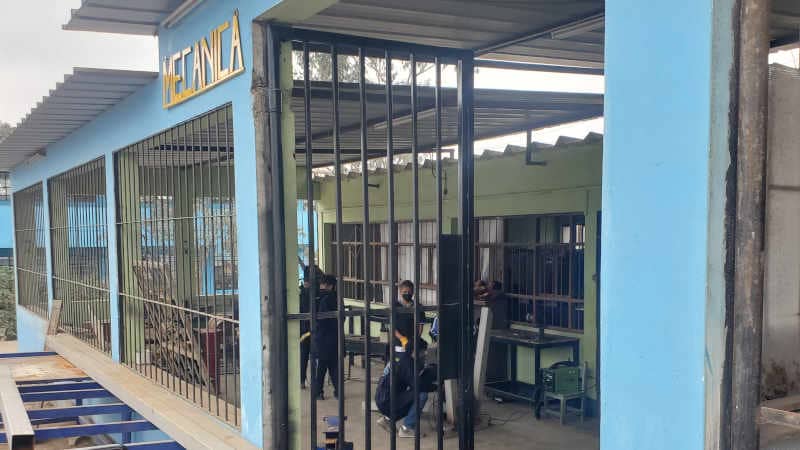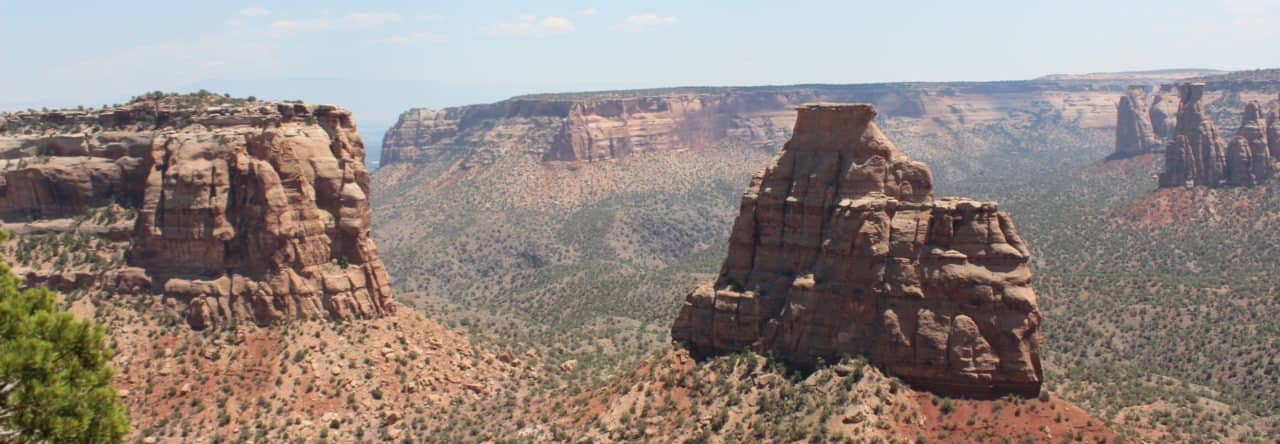Throughout our time in the program there were three more school visits. Each school was different than the one that preceded it.
Institución Educativa N°6152 Stella Maris

As we walked through the front gate the students were interested in us but there wasn’t the excitement that we had seen at the prior schools. We walked through one of the courtyards and entered the secondary section of the school grounds. As we walked by an 8th grade math classroom the school administrator asked for four volunteers to go into the room and I was one of them. The other teachers would go into different rooms. Once we entered the room the teacher stepped aside and we were left in the front and center of the room with no introduction. After a brief awkward pause we started a brief question and answer session until we were picked back up.

Next up was a walk over to the primary section of the grounds. While there we entered a classroom (3rd grade?) and did a little group activity with them.

For the last part of our visit we were brought into their English classroom and several of their students performed some folk dances for us. After some goodbyes we were on our way.

Institución Educativa N°5143 “Escuela de Talentos”
Our welcome to this school was completely different than the other schools we visited. Instead of seeing traditional dances, their orchestra performed for us in the main courtyard. This would set the tone for how different this school would be.
Once the students started to pack up their instruments and some introductions were made, we were brought into a math classroom. Every student had a brand new laptop and there was an interactive whiteboard in the front of the room. Of all the schools we visited, this one resembled schools in the United States the most. When we left the math room we were broken up into groups and brought into different rooms. My group was brought into a robotics lab where students were working on building remote control cars that would be programmed with an Arduino. Later in the year they would be building drones.

This school is a public school but students need to apply to get in. From what I understand, this school is also sponsored by an oil company and that explains why they have so much more in the way of resources than the other schools we saw. Prior to leaving the school some students gave brief presentations on some of the projects that they had worked on. Some students gave presentations on a tiny submersible that could be piloted remotely and was meant to collect garbage in the ocean. This was just a functional model but it was impressive. Another group gave a presentation on a disinfecting robot that they created.

One of the students gave a presentation on a voice assistant app he is creating for people who are visually impaired. The last group of students gave a presentation on their studies of electromagnetism, Faraday’s Law, and electromagnetic induction. The electrical grid is not very reliable and students want to look for ways that they can work towards improving it.

Institución Educativa Dora Mayer

As we walked through the front gate there were students holding up a metal hoop covered in red, white, and blue balloons that they had us walk through. From there we were escorted to their auditorium for an assembly in our honor. We were seated on on side of the room, students on another, and some educators on a third. Students performed traditional dances, a student sang a song for us, and we were presented with certificates of appreciation.

The rest of our visit to this school was a whirlwind. We were broken up into small groups and went from classroom to classroom. In one classroom students performed a conversation in English that they had created. In another classroom we got to see some 1st graders learning to count using manipulatives like beer bottle and soda bottle caps. Another classroom gave us some arroz con leche and bracelets. In another classroom we joined the class in drawing our three favorite things in Peru. While this was all taking place other students were playing in the courtyard. In between rooms students would come up to us and ask for the occasional autograph or selfie.

For the first time I got to go into an actual science lab although no students were currently in it. There were long lab tables covered in porcelain tiles with science supplies lining some of the walls. One of the things that I found interesting was that they had preserved specimens of some human organs like a brain and they had preserved human fetuses at different ages. After a quick walkthrough I got to enter the physics classroom. The physics teacher was sitting at his desk just relaxing and was super laid back like pretty much every other physics teacher I know. We spoke very briefly but then I had to move on. Of all the school visits, this one was by far the most fun. The students and faculty really didn’t want us to leave but we didn’t either. It probably took us at least 45 minutes to head out due to the constant requests for group pictures and selfies. Unfortunately we had to leave as our day was completely packed full.
































